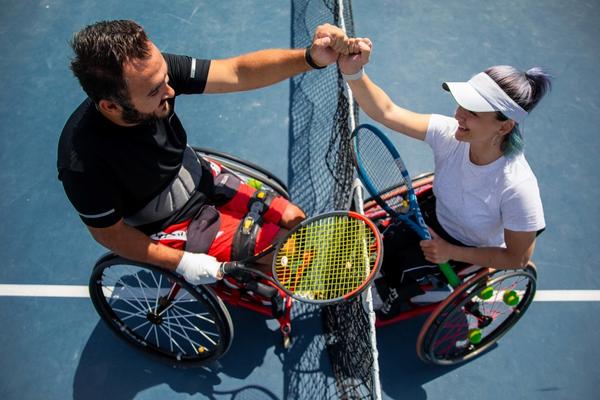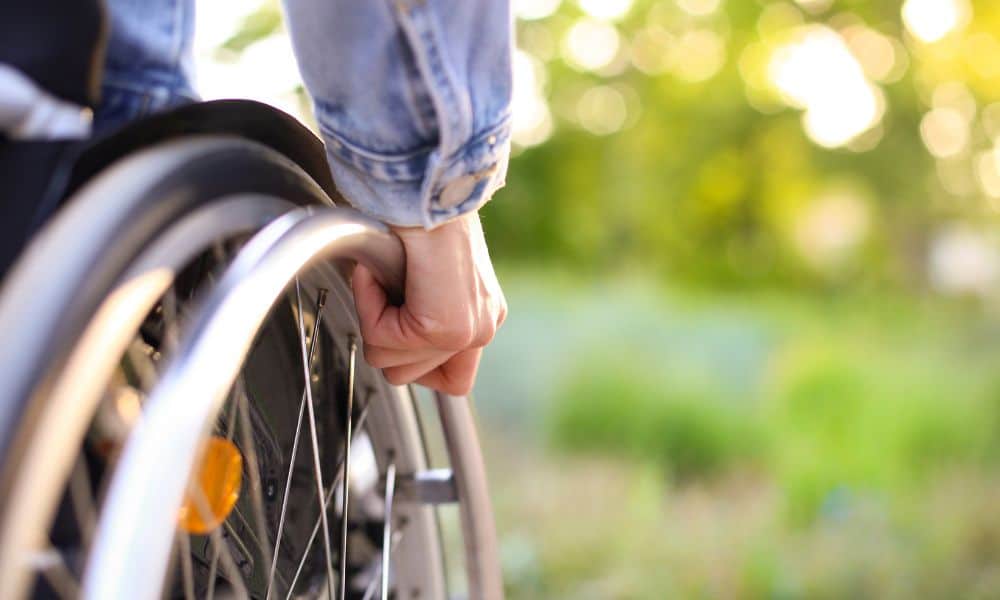All people need to engage in regular physical activity to maintain good health. However, according to reports, less than half of adults in the United States who have mobility disabilities regularly engage in aerobic activity. For many people with disabilities, environmental barriers make exercising regularly difficult. These fitness tips can help people with disabilities.

1. Be Active in Your Neighborhood
Outdoor activities in your neighborhood are good for your physical and mental health. If you have difficulty walking, assistive devices, such as walkers or wheelchairs, may make it possible for you to engage in outdoor activities. If there are accessibility issues in your neighborhood, consider contacting your local Americans With Disabilities Act, coordinator. If you have a homeowners’ association, it may also be helpful to talk to leadership about improvements that will make the neighborhood more accessible.
2. Look for Workouts You Can Do at Home
If accessing activities outside your home is a barrier, consider engaging in home-based workouts via TF Clark Fitness. The National Center on Health, Physical Activity and Disability feature a series of home workout videos for people with disabilities on its YouTube channel. You can also find a 14-week program on the organization’s website. The Special Olympics website’s Fit 5 program includes useful fitness information for people with disabilities, including video demonstrations of specific exercises.
3. Engage in Adaptive Sports
Adaptive sports programs can be a fun way for people with disabilities to increase their physical activity while making new friends. Your doctor or physical therapist can recommend the amount and type of physical activity best for you. Cycling using modified bikes is one of the most popular activities. Modified tricycles are available for those struggling to balance or hold a bicycle upright. Hand cycling may be an option for those who find pedaling difficult. Tandem cycling can be a good choice for people with visual or hearing problems.
4. Invest in Wearable Technology
Voice-activated wearable technology can help people with disabilities access online fitness information, check the weather, use social media, monitor their health, and call for assistance. Many wearable devices also provide access to workout programs. Devices like the Apple Watch offer functions that help people with vision issues navigate the system.
5. Choose Disability Friendly Senior Living
Older people with disabilities may consider moving to a senior living facility. These residential communities assist seniors while also allowing them to maintain some independence. Assisted living may be a good choice if you need help with daily activities, such as dressing, bathing, taking medication, eating, or using the restroom, but do not require constant care. Look for a facility that has exercise facilities and outdoor space for exercise that is accessible to people with disabilities.
If you like the social aspects of assisted living but do not need help with daily activities, an independent living community may be a good choice. If you need 24/7 medical care, you may want to consider a skilled nursing facility. When deciding which facility to choose, review online facility reports, payment options, pricing information, and reviews from other families.
The Last Word on 5 Fitness Tips for People With Disabilities
A lack of accessibility options can make staying physically active difficult for some people with disabilities. Taking steps, such as investigating senior living options, can make it easier to maintain your physical health.




